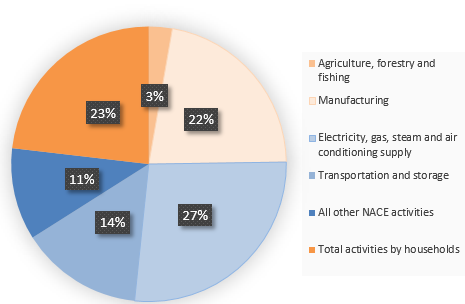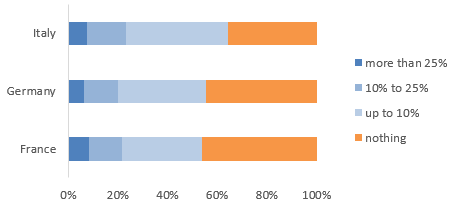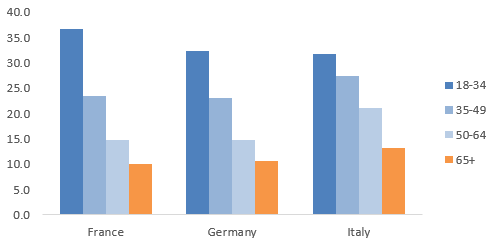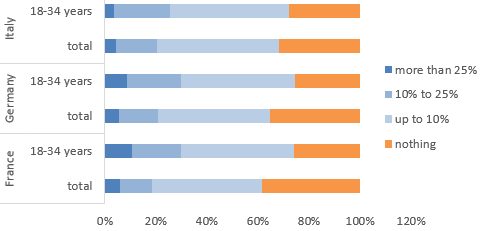European households account for as much carbon dioxide emissions as the manufacturing sector. For the EU to reach its target of climate neutrality by 2050, they will have to change their behavior, but our research shows on average 46% of French and 44% of Germans respondents are not prepared to pay more for climate-friendly products. Around a quarter of all carbon dioxide emissions in 2018 were attributable to activities by households (Figure 1), a share on par with that of the manufacturing sector and just a tad below power generation. Even more striking: progress in recent years has been dismal. While manufacturing and power generation have reduced their carbon footprints by 20% and 27%, respectively, since 2008, households have only managed a 9% reduction. The consequence: The share of households’ emissions increased by 2pp over the last decade.
Figure 1 – CO2 emissions in the EU 28 by activities, 2018 (shares in %)
Figure 1 – CO2 emissions in the EU 28 by activities, 2018 (shares in %)




